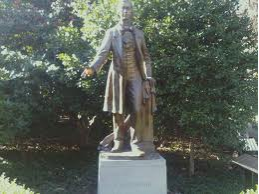Imagine if there were two Californias. There have been 27
attempts to break up the state by one accounting, and in one instance the
people actually voted to create two states out of California. I bring this up
as the 150th anniversary of the attack on Fort Sumter occurred
yesterday because the Civil War is probably the reason there is only one
California today.
Of course, Governor Brown has
been saying of late that California and the country is as divided today as
it was during the Civil War, but that’s an issue for another column.
April 12th began commemoration of the Civil War’s
Sesquicentennial. A state for ten years, California lined up on the Union side
during the conflict despite much internal bickering from strong supporters of
the Confederacy. California’s Electoral College vote in 1860 went to Lincoln
despite his capturing less than a third of the popular vote amongst four
candidates for the presidency.
As historian Kevin Starr noted in the first of his histories
on the state, Americans
and the California Dream 1850-1915, "five hundred or so volunteers
served with the Second Massachusetts Cavalry, a few columns did patrol duty in
the Southwest and 16,000 locally raised troops manned garrisons at home."
The Los Angeles Times Sunday reviewed
battles in the Southwest, which kept the gold fields and the southern
California ports out of the hands of the Confederacy.
But the coming of the Civil War was responsible for keeping
California as a single state because it prevented congress from acting to
divide the state.
Three times following statehood, southern Californians made
efforts to divide the state. Residents in the south were dissatisfied with
inequitable taxes and land laws. In 1859, the state legislature passed the Pico
Act, named after Andres Pico, former governor of Alta California and then a
California legislator. The measure would split California into northern and
southern sections, creating the Territory of Colorado in the south in
anticipation of statehood.
The legislature passed the bill and the governor signed it.
Voters in the southern California counties backed a referendum on the measure with
75-percent of the vote.
Newly appointed U.S. Senator from California, Milton Latham,
supported the effort. He wrote that residents in the less populated southern
counties complained about "the expenses of a State Government … They
complain that the taxes upon their land and cattle are ruinous-entirely
disproportioned to the taxes collected in the mining regions; that the policy
of the State, hitherto, having been to exempt mining claims from taxation, and
the mining population being migratory in its character, and hence contributing
but little to the State revenue in proportion to their population, they are
unjustly burdened; and that there is no remedy, save in a separation from the
other portion of the State. In short, that the union of southern and northern
California is unnatural."
Some complaints never change.
The governor sent the request to congress to create the new
territory.
But, under the shadow of the coming Civil War, congress did
not take up the request.
One can only wonder what two different states cut on a line
west to east from the northern boundary of San Luis Obispo County would be
today. Would the State of Northern California be even more Democratic in its
political actions? Would Southern California be competitive for the Republican
Party?
Would one state have a bigger budget problem than the other?
And where would Southern California get its water and at
what cost?
Interesting to speculate. One thing is sure, politicians
would be happy that there would be four California U.S. Senate seats to vie
for.
California commemorates the Civil War with the Civil
War Memorial Grove on the grounds of the state capitol. The grove of trees
was planted in the memory of the soldiers lost in the war and contains trees
planted as saplings in 1897, acquired from many battlefields of the war.
 Recently located in the grove is the statue of Thomas Starr
Recently located in the grove is the statue of Thomas Starr
King, a Civil War era minister, who preached fervently in support of the Union
cause. His statue represented California in Statuary Hall at the U. S.
Capitol from 1931 until 2009 when it was replaced by a statue of Ronald
Reagan.
As Greg Lucas relates in his California’s Capitol, the vote
to replace the Starr statue with a Reagan statue passed
with only one dissenting vote in the legislature. That vote belonged to now
Secretary of State Debra Bowen who hopes to be walking through Statuary Hall as
a member of Congress as she runs in the special election to replace retired
congresswoman Jane Harman.

